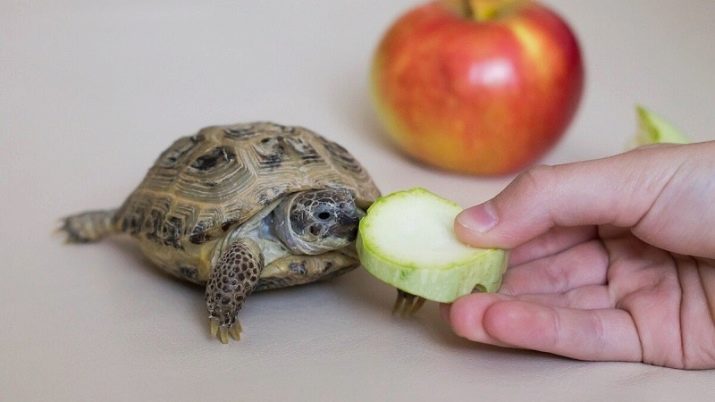All about hibernation in red-eared turtles
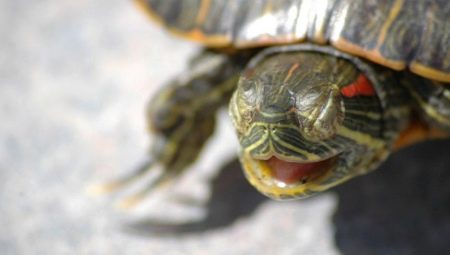
Red-eared turtles are excellent pets that usually do not cause much trouble for their owners. However, those who have only recently started such an animal and do not yet know its characteristics may panic when they see that the animal is preparing to hibernate. It is worth taking a closer look at this condition and finding out if there is any reason for concern.
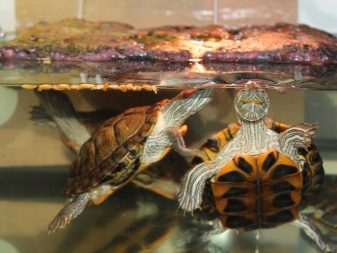
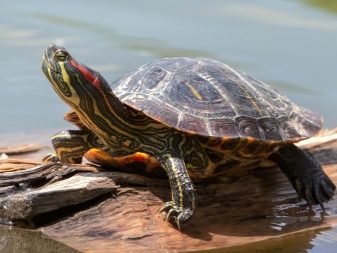
How does hibernation occur in nature?
Red-eared turtles in the wild hibernate when there are some unfavorable conditions... For example, too much cold or lack of food. There is no clear schedule here, but mostly natural hibernation takes place in winter, like other animals. Winter sleep lasts about 3-5 months, while all processes in the animal's body are slowed down. The turtle uses internal resources to stay healthy while sleeping.
Hibernation has several undeniable advantages:
- stabilizes hormones;
- allows you to maintain the health of the glands;
- increases the number of years of a pet's life.
People who breed red-eared turtles can specifically create conditions under which the animal falls asleep. This is done so that the pet can get pregnant and postpone a good clutch.... Still, sleeping at home is not typical for turtles. They live in warmth and eat well, and therefore there is simply no reason for it.
If the owner noticed that the animal is preparing to sleep, then it is imperative to show it to the veterinarian for consultation. The pet may be sick.

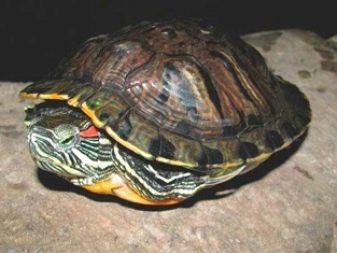
How do you know if a turtle is preparing to hibernate?
Animals that were not bought in a nursery, but caught in the wild, will hibernate even if you provide them with the best conditions. The female, who is not all right with hormones, will also go to bed in order to restore the natural background of the body for future conception. It is useless to hinder here. In this situation, it is important for the owner to determine the intentions of the animal.
The first sign is low physical activity. Turtles become lethargic, do not want to move, constantly lie down and look tired and without mood. The pet often hides, begins to bury itself in the sand, reacts aggressively if it is shaken or touched. A turtle can sit motionless for many hours, looking at one point. Another symptom by which you can recognize impending hibernation is the frequent and uncontrolled yawning of the animal.
An additional sign that every attentive owner will notice at home, - decreased appetite... The pet may eat poorly or refuse food altogether. Changes in taste preferences are also possible.
If you notice at least one of these symptoms, you need to make an appointment with your veterinarian. If he confirms that the animal is simply planning to hibernate, a number of conditions will need to be created for this.
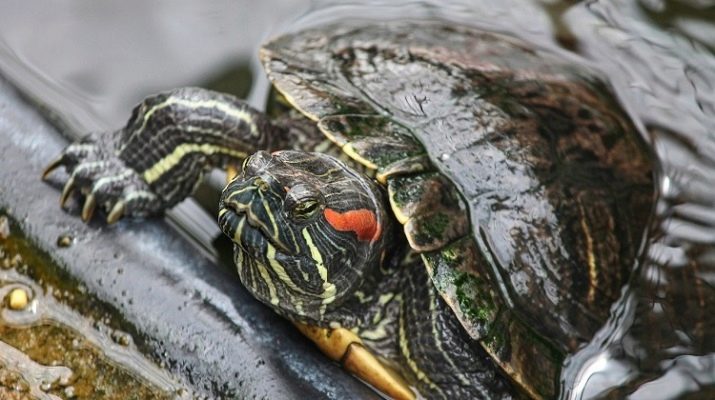
Also, the turtle can hibernate suddenly, and this is not always worth fearing. Those who are just starting to communicate with such a pet often confuse hibernation with the death of an animal. In order not to be tormented by meaningless assumptions, you can conduct a special test.
- Try to open the turtle's mouth. Pull back the lower jaw, you can lightly move your finger along it. When you leave your mouth alone, the turtle will close it.
- The sleeping animal hides its head and limbs in a shell. Dangling legs are not good.
- Apply a cool spoon to your pet's eye... He may blink or open his eye. Lack of reaction will mean the death of the turtle.
- If you put the animal in warm water with a temperature of about 30 degrees, it will begin to move and touch its paws.
In addition, some owners fear that they will not be able to distinguish between illness and impending hibernation. If, in addition to a decrease in activity, you notice at least one of the reasons described below, then hibernation has nothing to do with it:
- swelling of the eyes and discharge from them;
- blood in feces and urine;
- strange white spots and stripes on the carapace;
- unplanned molt and shell detachment.

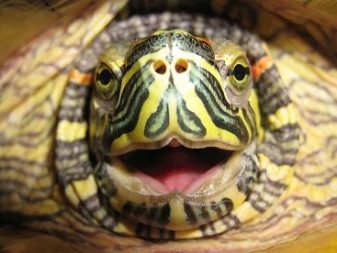
What conditions should be created for the turtle at home to sleep?
Before allowing your turtle to hibernate in winter, it must be properly prepared. The first step is to visit your veterinarian. He will examine the pet, check if everything is in order with health. Next, the animal will be tested and given a remedy for worms. If all is well with health, you can start preparing the animal for bed. For two months, the pet begins to feed tightly so that the body has enough resources. But in the last week before going to bed, feeding is completely stopped. 24 hours before hibernation, the animal needs to be bathed several times and given a lot of water. This will get rid of the remnants of the digested food.
The conditions in the aquarium must also be completely changed. Usually red-eared turtles live in warm temperatures - about 30 degrees. During hibernation, you need to provide temperature conditions of 6-12 degrees. But you cannot change them right away, only gradually so that the turtle gradually gets used to it. A sharp change threatens the death of the animal, as well as lower temperatures. In addition, the aquarium should have a low level of lighting. A higher humidity than usual should be ensured. Moss and leaves should be thrown at the bottom. Such a composition will not retain moisture. The turtle will sleep well in it. By the way, the animal will not sleep for about 3-5 months, most likely 10 weeks will be enough for it. Large pets can sleep for 14 weeks, but this is the maximum.
A hibernating turtle should not be disturbed.No need to try to provide meaningless care: try to feed, put in water, exfoliate the shell... You should not wake up the pet, but you need to monitor the weight. Monthly body weight will decrease by 1%, this is normal.
Perhaps the turtle will lose a little more. But if the percentage approaches 10, you urgently need to take the animal to the veterinarian, who will artificially bring it out of hibernation.
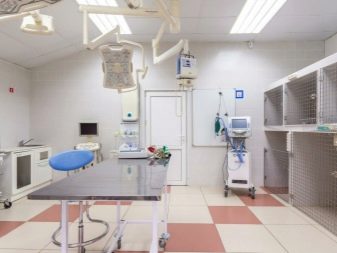
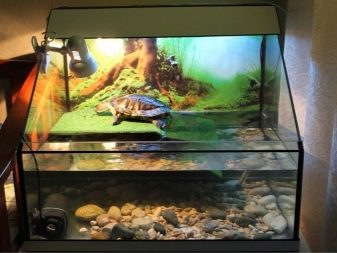
How to wake up correctly?
An animal that is about to end hibernation must be properly removed from it. To do this, you must comply with a number of rules and conditions.
Temperature
Taking a turtle in your hands and placing it from +10 degrees to +30 is not the best idea, because this is almost a 100% guarantee that the animal will die. As soon as the pet starts to move, the temperature should be gradually increased, by about 2 degrees per day. In 2 weeks it will be possible to return the previous conditions. But you need to place a turtle in them only when the animal is active.
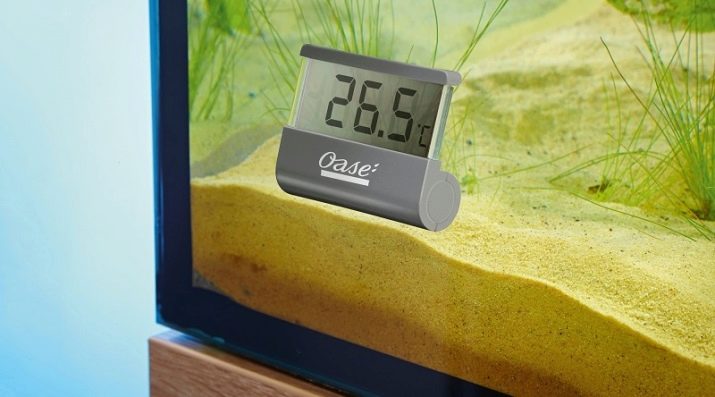
Bathing
A pet that has been in hibernation for a long time will greatly need a bath. She will finally wake up the bug. Take a small container, fill it lightly with water and add some glucose. Put the animal there for half an hour. The body will be saturated with moisture, the turtle will be invigorated, and will be able to go to the toilet. After the bath, drafts and cold should not be allowed. The animal will immediately need to be placed in a heated terrarium.
The bathing procedure is carried out after the animal has already returned to normal conditions. The duration should be increased, bringing it up to 40-60 minutes a day. It is recommended to bathe daily. It is strictly forbidden to collect a lot of water, since a sleepy and not too active animal will begin to swallow it and eventually choke.
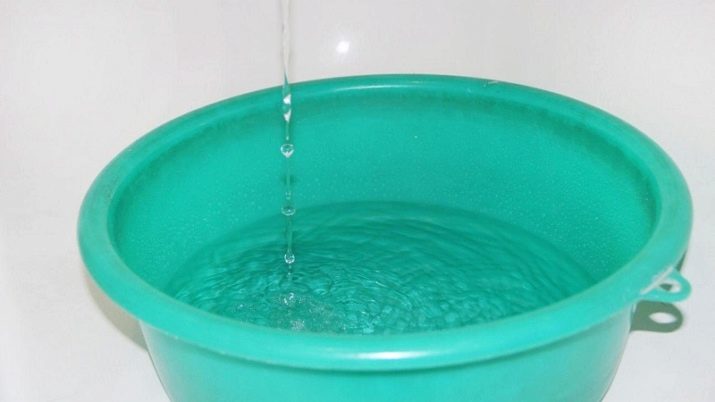
Recovery
During hibernation, the red-eared turtle spends a lot of vital body resources. She will be lethargic and weakened, so everything lost will need to be replenished. If this is not done, the risk of getting a complication and getting sick will be too great. Therefore, even before removing the turtle from hibernation, you will need to visit the veterinarian to prescribe a course of the necessary drugs. Most often it is a complex of vitamins and electrolyte compositions.
They will need to be injected by injection, some can be mixed with food. Such complexes will restore fluid in the turtle's body, prevent dehydration, and stimulate overall health recovery.

Ultraviolet irradiation
This is a special UV lamp, not a heating device. It is the UV lamp that is responsible for the production of vitamin D, which, in turn, allows calcium to be absorbed. If you deprive the turtle after hibernation of such lighting, it will begin to shed, the shell will become soft. Such a situation cannot be allowed, so the recently emerging turtles are provided with UV-lamp illumination for 10-12 hours.
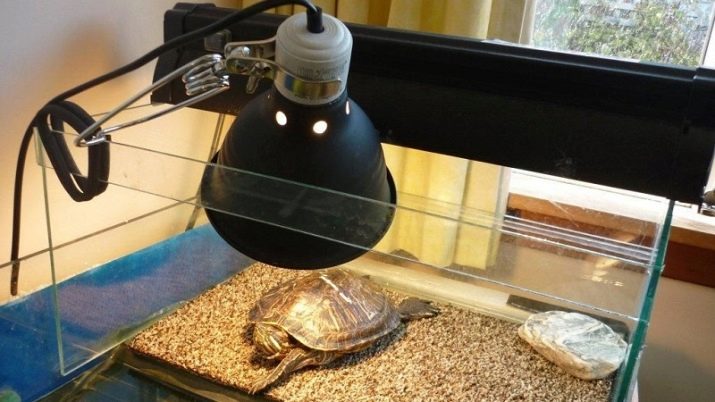
Feeding
An animal that has recently woken up needs to be fed properly. The first couple of days it is not worth offering food, and the turtle is unlikely to be tempted by it. Then the diet is gradually returned to normal, offering the usual products, but so far in smaller quantities. Typically, turtles eat dry food. He is thrown into the water, making sure that the animal eats everything. The excess must be removed, otherwise the water will become dirty.
During the recovery period from hibernation, red-eared turtles will need animal food. It would be wise to offer them low fat sea fish, seafood cocktail. Pets will not give up snails, live or dried insects. Be sure to offer lettuce, apples, cucumber slices. All this will need to be previously doused with boiling water. Do not forget that a weakened animal needs a lot of calcium to rebuild its shell. A wide variety of sources of this beneficial element are available at pet stores.
You should consult a veterinarian if the owner noted the following problems when coming out of hibernation:
- the animal does not want to wake up in any way, demonstrates excessive lethargy;
- the pet does not go to the toilet and does not eat anything;
- eyes remain closed;
- the tongue takes on a non-standard red color.
